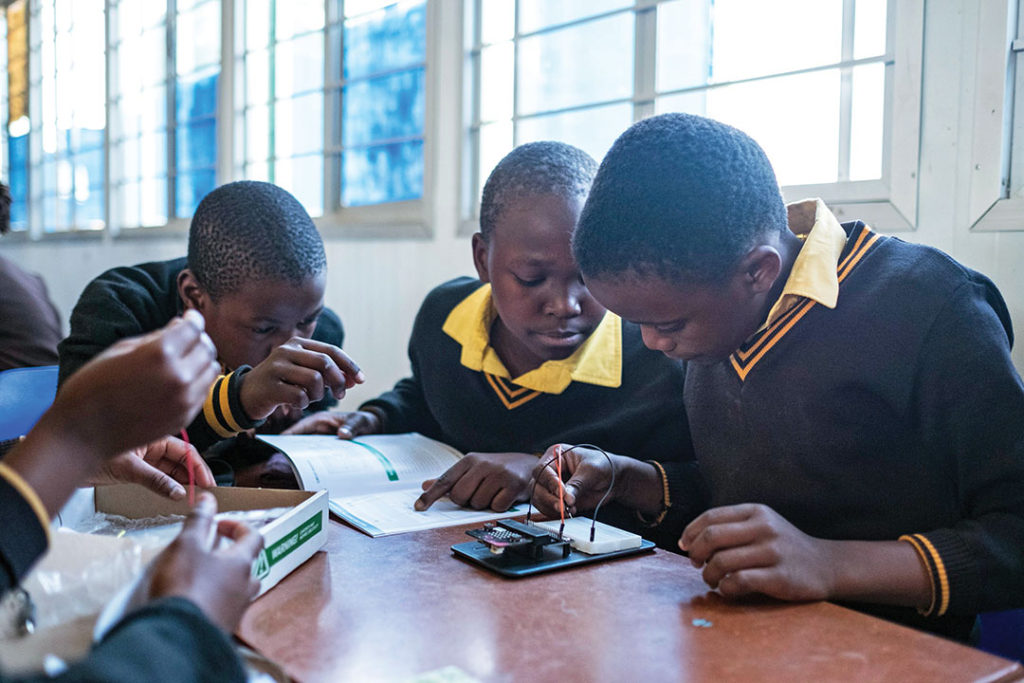AGENCE FRANCE-PRESSE
It’s Wednesday, 2 p.m. sharp in the densely populated South African township of Ivory Park —time for about 60 11-year-olds to duel at their local coding club.
Armed with basic coding blocks, inventor kits, laptops and inexhaustible imaginations, the six primary school teams compete. The coding club kids use electronic boards to make temporary circuits and prototypes to devise solutions for problems they’ve identified in their community.
“We are making an incubator machine that helps children who are born premature and those who are sick,” said student Sifiso Ngobeni. Competitors from another school are tackling the scourge of missing children.
Coding is the instruction that a robot or computer program reads and then executes. At the coding clubs, students learn to design the code to make it happen. Although access to schooling has increased in South Africa since the end of apartheid, the education system often fails to make the grade.
“The fact that we still have 80 percent of teachers using chalks and blackboards in this day and age is a serious cause for great concern,” education activist Hendrick Makaneta said. “It cannot be correct that the class of 2018 still looks exactly like the class of 1918.”
In a country where more than 50 percent of young people are unemployed, coding clubs also boost the chances of finding a job.
Although most of the Ivory Park pupils are familiar with using smartphones, smart TVs and the internet, coding and understanding algorithms is another challenge altogether.
A 2018 report by McKinsey highlights that 45 percent of all current tasks could be automated with present technology. Innumerable aspects of life, from science to engineering, and financial services to law or art, will depend on coding.

